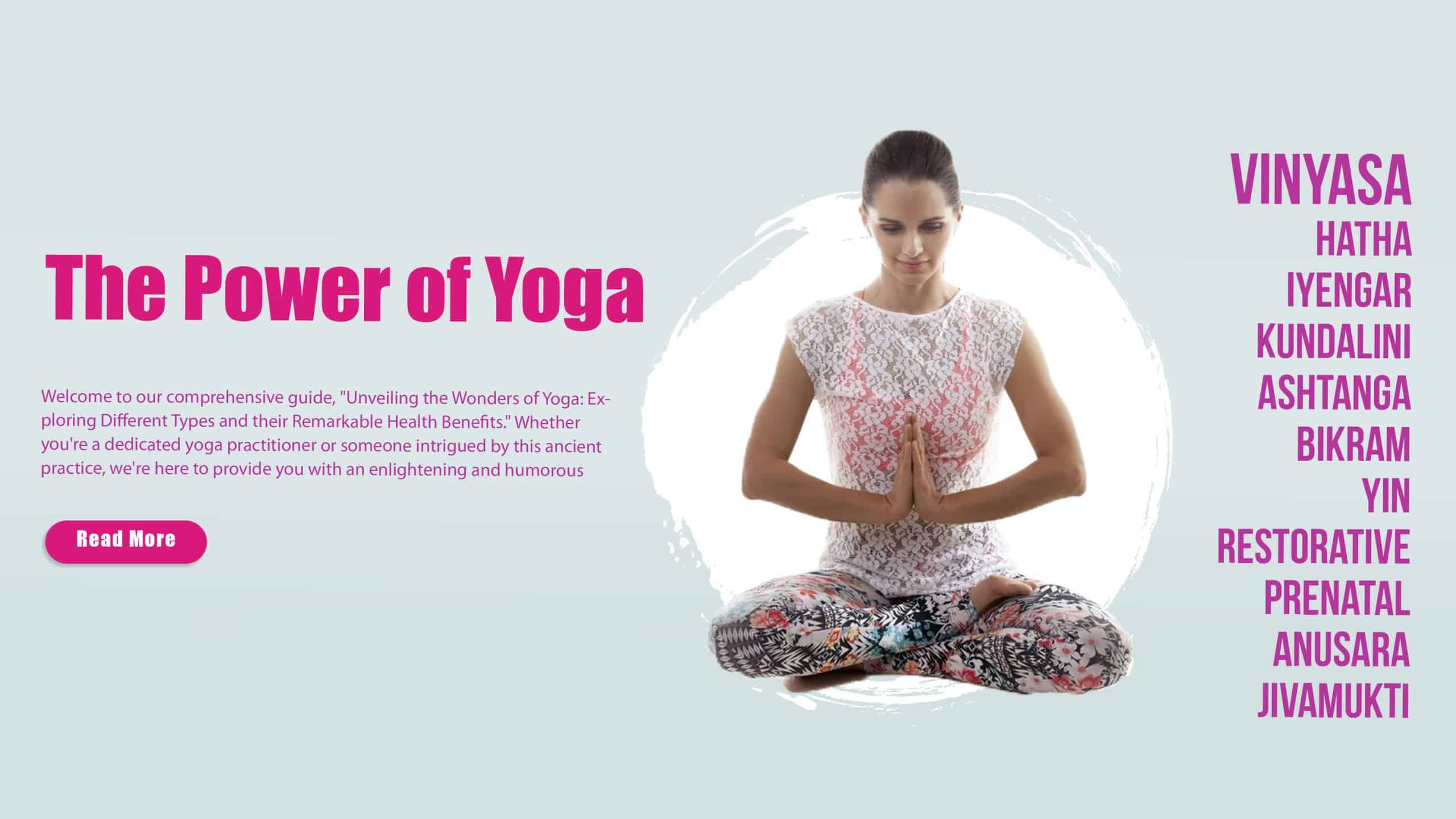Introduction (The Power of Yoga)
The Power of Yoga! Welcome to our comprehensive guide, “Unveiling the Wonders of Yoga: Exploring Different Types and their Remarkable Health Benefits.” Whether you’re a dedicated yoga practitioner or someone intrigued by this ancient practice, we’re here to provide you with an enlightening and humorous journey into the world of yoga.
Yoga is much more than just a trendy activity for social media posts—it has a profound impact on both the body and mind. From the calming stretches of Hatha Yoga to the dynamic flows of Vinyasa and the invigorating heat of Bikram Yoga, the options are as vast as the ocean. So, grab your metaphorical surfboard, and let’s ride this wave of well-being together.
Furthermore, in this guide, we will embark on an exhilarating exploration of various yoga styles, uncovering their unique charms and the health benefits they offer. With a touch of humor, we’ll delve into the gentle poses of Hatha Yoga, the flowing sequences of Vinyasa Yoga, the challenging trials of Bikram Yoga, the rejuvenating retreats of Restorative Yoga, and the energizing awakening of Kundalini Yoga. It’s time to strike a pose, open your mind, and discover how yoga can transform your life in countless ways.
So, grab your yoga mat, take a deep breath, and immerse yourself in the captivating world of yoga. Whether you’re a seasoned yogi or a curious beginner, this guide will illuminate your path as you explore the various types of yoga, uncover their hidden treasures, and experience the remarkable health benefits they offer. Get ready to stretch, strengthen, and strike a pose with a smile as we embark on this extraordinary yogic adventure together! (The Power of Yoga)
Hatha Yoga: Unraveling the Secrets of Serene Stretching (The Power of Yoga)
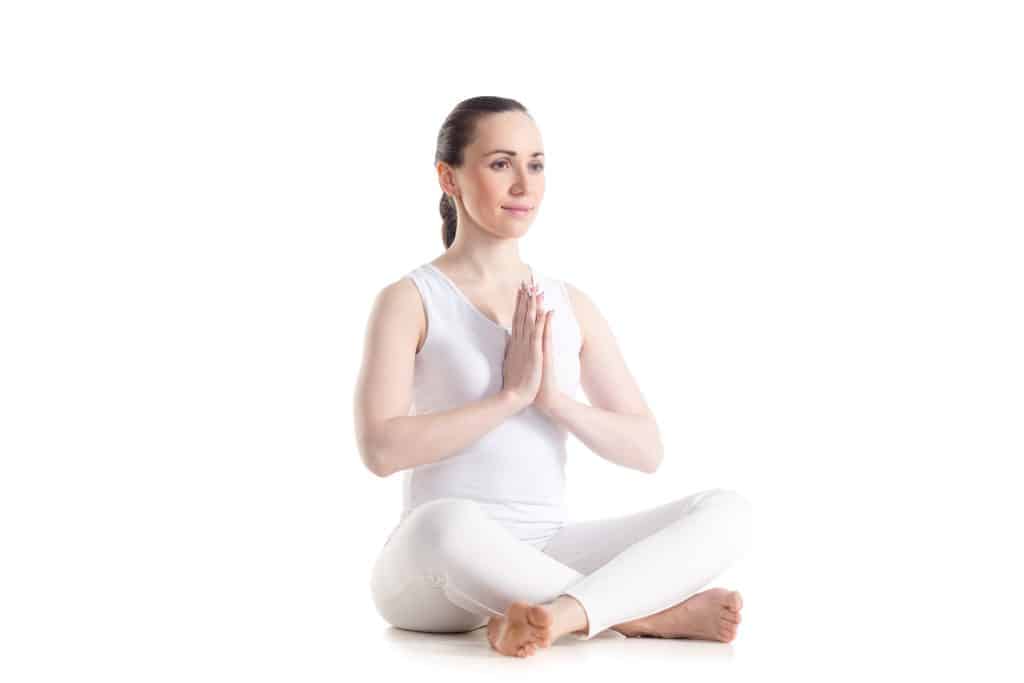
Welcome to the enlightening world of Hatha Yoga, where tranquility and harmony blend seamlessly with physical movement and mental focus. In this essay, we will dive deep into the mysteries of Hatha Yoga, exploring its origins, principles, and the multitude of benefits it offers for both the body and mind. Prepare to embark on a journey of self-discovery and rejuvenation as we unveil the secrets of this ancient practice.
The Essence of Hatha Yoga:
Hatha Yoga, derived from the Sanskrit words “ha” meaning sun and “tha” meaning moon, symbolizes the union of opposites within ourselves. It encompasses a wide range of physical postures (asanas), breathing techniques (pranayama), and meditation practices, all designed to promote balance, strength, and flexibility. At its core, Hatha Yoga seeks to harmonize the body, mind, and spirit, creating a state of inner calm and serenity.
The Path of Hatha Yoga:
Furthermore, One of the distinguishing features of Hatha Yoga is its gentle and deliberate approach to movement. The practice encourages individuals to listen to their bodies, honoring their limitations and finding a balance between effort and ease. Through mindful breathing and conscious awareness, practitioners cultivate a sense of presence, becoming attuned to the subtle sensations and energy flows within their bodies.
Benefits for the Body:
Hatha Yoga offers a plethora of physical benefits. The gentle stretching and strengthening of the muscles help improve flexibility, enhance posture, and increase overall body awareness. Regular practice can also contribute to better balance, coordination, and improved joint health. Additionally, Hatha Yoga is known to support the proper functioning of bodily systems, including the respiratory, circulatory, and digestive systems.
Benefits for the Mind:
Beyond the physical realm, Hatha Yoga is a powerful tool for nurturing mental well-being. The intentional focus on breath and body awareness cultivates a sense of mindfulness and presence, helping to alleviate stress, anxiety, and promote relaxation. The practice also enhances mental clarity, concentration, and self-discipline. Through regular Hatha Yoga practice, individuals often experience an increased sense of inner peace and an improved ability to manage the challenges of daily life.
Embracing the Practice:
Hatha Yoga welcomes individuals of all fitness levels and ages, making it accessible to everyone. Whether you’re a beginner or an experienced yogi, the practice can be modified to suit your unique needs and capabilities. Engaging in regular Hatha Yoga sessions, either in a class setting or through personal practice, allows for a gradual progression and a deeper connection to oneself.
Furthermore, as we conclude our exploration into the world of Hatha Yoga, we invite you to embrace the serenity and wisdom it offers. Through the practice of gentle stretching, conscious breathing, and mindful awareness, Hatha Yoga provides a pathway to physical vitality, mental clarity, and inner peace. So, take a step onto the mat, surrender to the present moment, and unlock the transformative power of Hatha Yoga. (The Power of Yoga)
Vinyasa Yoga: Embracing the Dynamic Flow of Sweat and Smiles (The Power of Yoga)
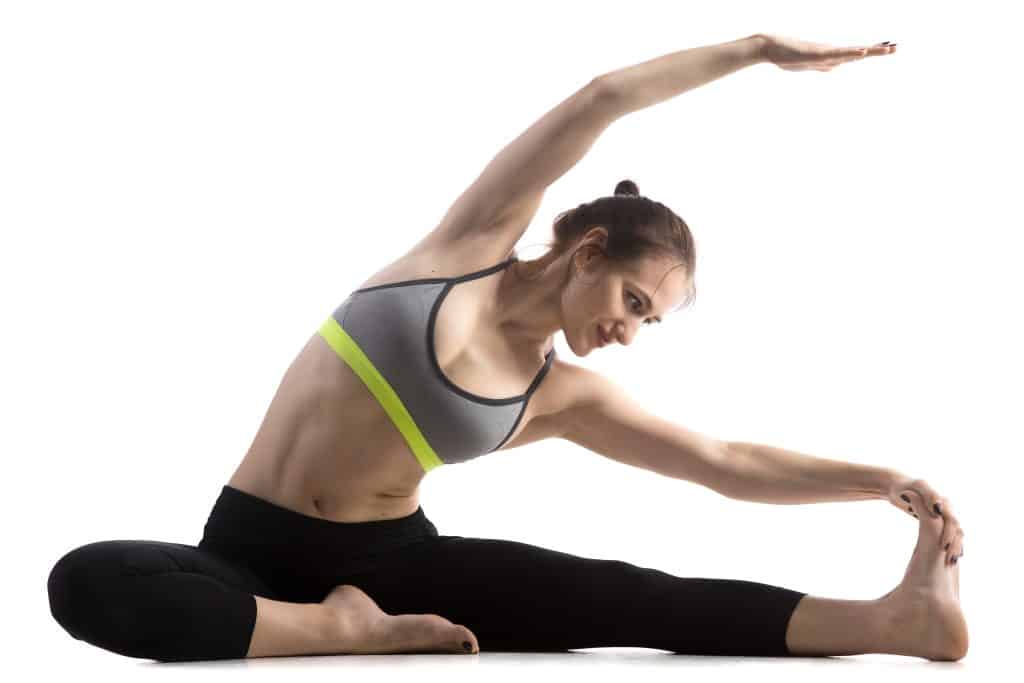
Welcome to the invigorating world of Vinyasa Yoga, where movement and breath merge into a seamless dance of strength, flexibility, and inner tranquility. In this essay, we will explore the essence of Vinyasa Yoga, uncover its unique characteristics, and delve into the physical and mental benefits it offers. Prepare to embark on a journey of energy, grace, and joyful exploration as we unravel the secrets of this dynamic yoga practice.
The Essence of Vinyasa Yoga:
Vinyasa Yoga, often referred to as “flow” yoga, is characterized by its fluid and dynamic sequences of postures linked together with conscious breath. Derived from the Sanskrit words “vi” meaning variation and “nyasa” meaning to place, Vinyasa Yoga invites practitioners to explore a variety of asanas, creating a continuous and rhythmic flow of movement. It embodies the union of breath and motion, guiding individuals to find harmony and presence in each transition.
The Flow of Movement:
One of the defining features of Vinyasa Yoga is its emphasis on the seamless flow of postures. With each breath, practitioners gracefully transition from one pose to another, creating a dance-like quality in their practice. The continuous movement cultivates a deep sense of mindfulness, allowing individuals to stay fully present and engaged in the present moment. The flowing nature of Vinyasa Yoga not only builds strength, flexibility, and balance but also becomes a moving meditation, calming the mind and awakening the body’s energy.
Benefits for the Body:
Vinyasa Yoga offers numerous physical benefits that contribute to overall well-being. The dynamic nature of the practice helps to increase cardiovascular fitness, enhance endurance, and improve muscle tone and flexibility. The consistent engagement of different muscle groups throughout the sequences promotes functional strength and body awareness. Additionally, the synchronicity of breath and movement promotes a deep sense of relaxation, reducing tension and stress in the body.
Benefits for the Mind:
Beyond the physical aspects, Vinyasa Yoga has transformative effects on the mind and emotional well-being. The rhythmic breath synchronized with movement creates a meditative state, calming the mind and fostering a sense of inner peace. Vinyasa Yoga encourages practitioners to cultivate a non-judgmental awareness of their thoughts and sensations, promoting mental clarity, focus, and mindfulness. The practice becomes an opportunity for self-expression, self-discovery, and an exploration of personal boundaries.
Embracing the Practice:
Vinyasa Yoga is a dynamic and accessible practice that can be adapted to suit practitioners of all levels. Whether you are a beginner or an experienced yogi, Vinyasa offers endless possibilities for exploration and growth. It allows for creative sequencing, variations, and modifications, providing opportunities to challenge oneself and experience personal breakthroughs. The practice also encourages a spirit of playfulness, inviting practitioners to embrace their uniqueness and find joy in the journey.
As we conclude our exploration of Vinyasa Yoga, we invite you to embrace the fiery flow of sweat and smiles that this practice embodies. Through the seamless integration of movement and breath, Vinyasa Yoga offers a transformative experience that nurtures the body, calms the mind, and uplifts the spirit. So, step onto your mat, surrender to the rhythm of your breath, and immerse yourself in the joyful exploration of Vinyasa Yoga. Let the fiery flow ignite your passion, strengthen your body, and bring a radiant smile to your face. (The Power of Yoga)
Restorative Yoga: Unwinding, Nurturing, and Finding Blissful Stillness (The Power of Yoga)
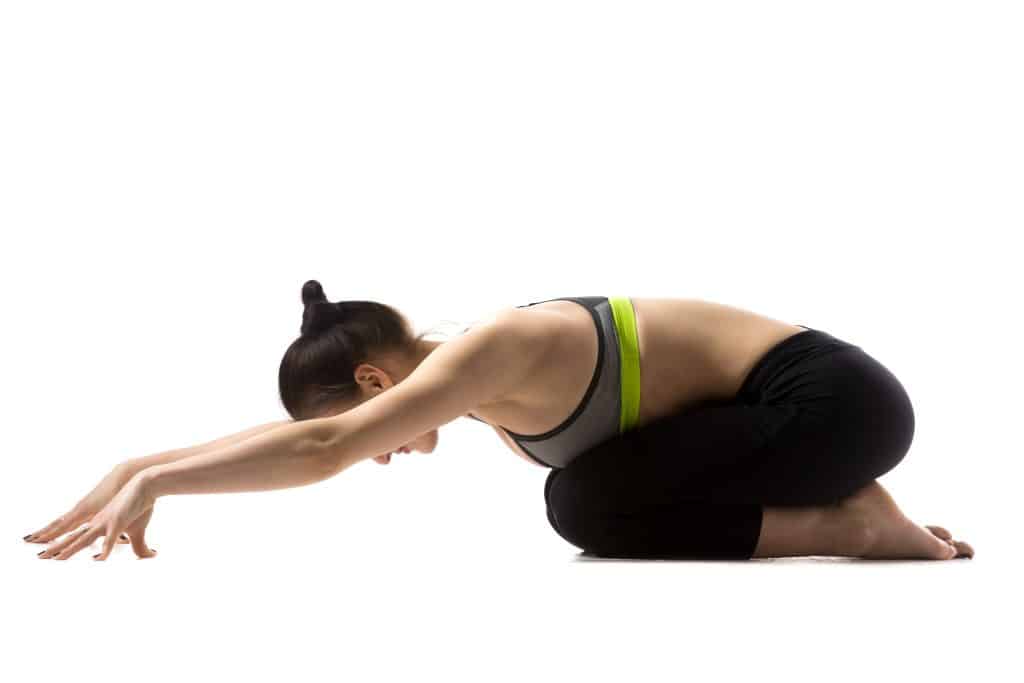
Welcome to the world of Restorative Yoga, a practice that invites you to slow down, relax deeply, and experience the profound benefits of stillness and gentle movement. In this essay, we will explore the essence of Restorative Yoga, uncover its unique qualities and benefits, and discover how it can bring a sense of peace, renewal, and nurturance to our lives. Prepare to immerse yourself in a practice that encourages deep relaxation and the restoration of mind, body, and spirit.
The Essence of Restorative Yoga:
Restorative Yoga is a gentle and therapeutic style of yoga that focuses on relaxation, restoration, and rejuvenation. Unlike more dynamic forms of yoga, Restorative Yoga emphasizes passive poses supported by props such as bolsters, blankets, and blocks. These props help the body find a comfortable position that promotes deep relaxation and releases tension. The practice is characterized by longer hold times in each pose, allowing for a gradual and mindful release of physical and mental stress.
The Power of Stillness and Deep Relaxation:
Restorative Yoga provides an oasis of calm in our fast-paced and demanding lives. By embracing stillness and surrendering to relaxation, practitioners can tap into the body’s innate ability to heal and restore. In this meditative state, the parasympathetic nervous system is activated, promoting a deep sense of relaxation, reducing stress, and restoring balance. The practice allows for the release of physical and mental tension, creating space for profound healing and rejuvenation.
The Importance of Support and Props:
Restorative Yoga utilizes various props to create a supportive and nurturing environment for the body. Bolsters, blankets, straps, and blocks are strategically placed to provide comfort and stability, allowing the body to fully relax into each pose. The props assist in releasing muscular tension, relieving pressure on joints, and promoting optimal alignment. This support encourages a sense of safety and relaxation, allowing practitioners to let go and experience a deeper level of restoration.
The Benefits for Mind, Body, and Spirit:
Restorative Yoga offers numerous benefits for overall well-being. Physically, the practice helps to reduce muscle tension, increase flexibility, and improve posture. It can alleviate chronic pain, ease the symptoms of anxiety and depression, and promote better sleep. Restorative Yoga also cultivates mindfulness and self-awareness, allowing practitioners to connect with their inner selves and develop a greater sense of compassion and acceptance. The practice becomes a sanctuary for self-care, nurturing both body and spirit.
Cultivating Stillness and Presence:
Therefore, Restorative Yoga invites practitioners to slow down and be present with themselves. In a world filled with constant distractions, Restorative Yoga provides an opportunity to tune into our bodies, minds, and breath. By cultivating a state of deep relaxation and stillness, we can develop a greater sense of self-awareness, inner calm, and mindfulness. Restorative Yoga becomes a practice of self-care and self-discovery, allowing us to nourish ourselves from within and find balance amidst the chaos of daily life.
Furthermore, as we conclude our exploration of Restorative Yoga, we invite you to embrace the practice of unwinding, nurturing, and finding blissful stillness. Restorative Yoga offers a sanctuary for relaxation, rejuvenation, and self-care. By creating a supportive and nurturing space for the body and mind, Restorative Yoga allows us to tap into our inner well of peace and healing. So, find a quiet corner, gather your props, and surrender to the gentle embrace of Restorative Yoga. Let the practice guide you towards profound relaxation, self-discovery, and a renewed sense of well-being. (The Power of Yoga)
Bikram Yoga (Hot Yoga): Sweating, Stretching, and Finding Zen in the Heat (The Power of Yoga)
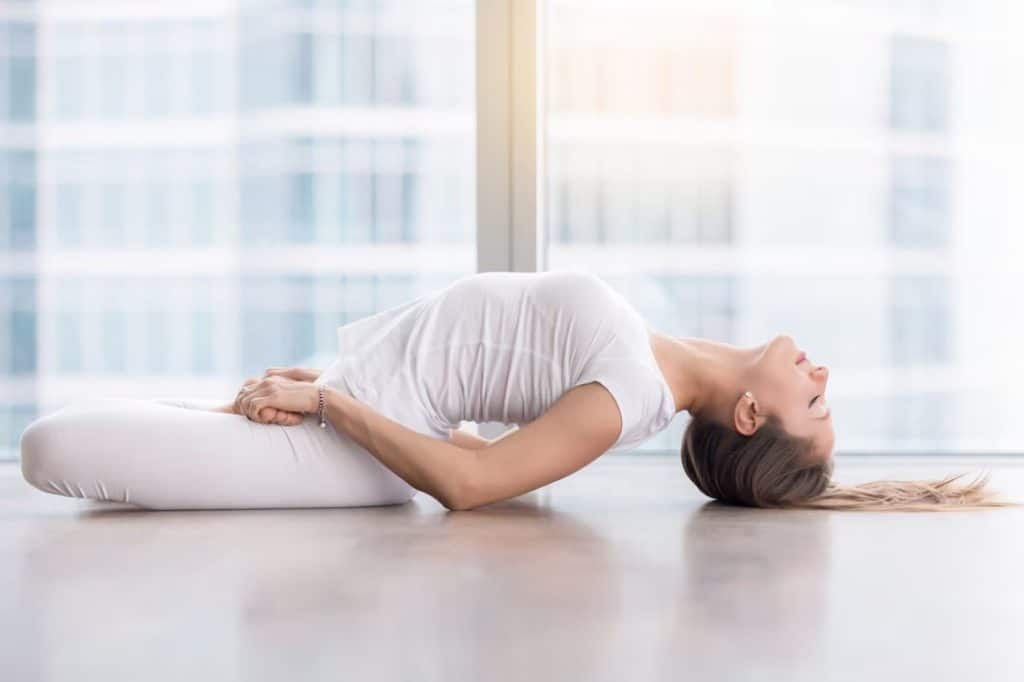
Welcome to the heated realm of Bikram Yoga, a practice that challenges the body, mind, and spirit amidst elevated temperatures. In this essay, we will explore the unique characteristics of Bikram Yoga, uncover the benefits it offers, and delve into the transformative power of practicing yoga in a hot environment. Get ready to embrace the heat, stretch your limits, and discover a deeper sense of tranquility and self-awareness.
The Essence of Bikram Yoga:
Bikram Yoga, also known as Hot Yoga, is a specific style of yoga developed by Bikram Choudhury. It consists of a series of 26 postures and two breathing exercises, all performed in a room heated to approximately 105 degrees Fahrenheit (40 degrees Celsius) with high humidity. This intense environment enhances the challenges and benefits of the practice, offering a unique experience for practitioners.
The Heat and its Effects:
Practicing yoga in a heated room has its purpose and benefits. The heat helps to warm up the body quickly, allowing for deeper stretching and increased flexibility. As the body sweats profusely, toxins are released, promoting detoxification and purification. The elevated temperature also elevates the heart rate, intensifying the cardiovascular benefits of the practice. Moreover, the heat facilitates mental focus and concentration, as practitioners learn to stay present and calm in challenging conditions.
The Sequence and Structure:
Bikram Yoga follows a specific sequence of postures and breathing exercises, each designed to target different areas of the body. The practice typically lasts 90 minutes, divided into two sets of 26 postures and the two breathing exercises. The sequence is carefully designed to systematically work through the entire body, promoting strength, balance, and flexibility. Each pose is held for a specific duration, allowing practitioners to explore their limits and deepen their practice.
Benefits for the Body:
Bikram Yoga offers numerous physical benefits. The heat and intense stretching help to improve circulation, increase joint mobility, and strengthen muscles. The practice can enhance flexibility, reduce muscle soreness, and improve posture. Regular practice can lead to weight loss, increased metabolism, and improved cardiovascular health. Moreover, the detoxifying effect of sweating helps to cleanse the body, leaving practitioners feeling rejuvenated and refreshed.
Benefits for the Mind and Spirit:
Beyond the physical benefits, Bikram Yoga has a profound impact on mental and emotional well-being. The heat and challenging nature of the practice require mental focus and discipline, fostering mental resilience and determination. As practitioners learn to calm their minds amidst the intensity, they cultivate a sense of inner peace and tranquility. Bikram Yoga becomes a moving meditation, a practice that unifies the mind, body, and spirit.
Embracing the Practice:
Bikram Yoga is a practice that challenges and rewards individuals of all levels. Whether you are a beginner or an experienced yogi, the heat and sequence provide a platform for personal growth and self-discovery. It is important to listen to your body, respect your limits, and stay hydrated throughout the practice. With time and regular practice, practitioners can witness their bodies becoming stronger, more flexible, and more resilient, both on and off the mat.
Furthermore, as we conclude our exploration of Bikram Yoga, we invite you to embrace the heat, stretch your limits, and find serenity within the intensity. Bikram Yoga offers a transformative experience, combining the physical challenges of the heat with the mental and spiritual benefits of a dedicated yoga practice. So, step into the heated room, surrender to the sweat, and discover the profound effects of Bikram Yoga on your body, mind, and spirit. Find your inner Zen amidst the heat and let the practice guide you towards greater strength, flexibility, and self-discovery. (The Power of Yoga)
Kundalini Yoga: Awakening the Inner Fire and Embracing the Cosmic Energy (The Power of Yoga)
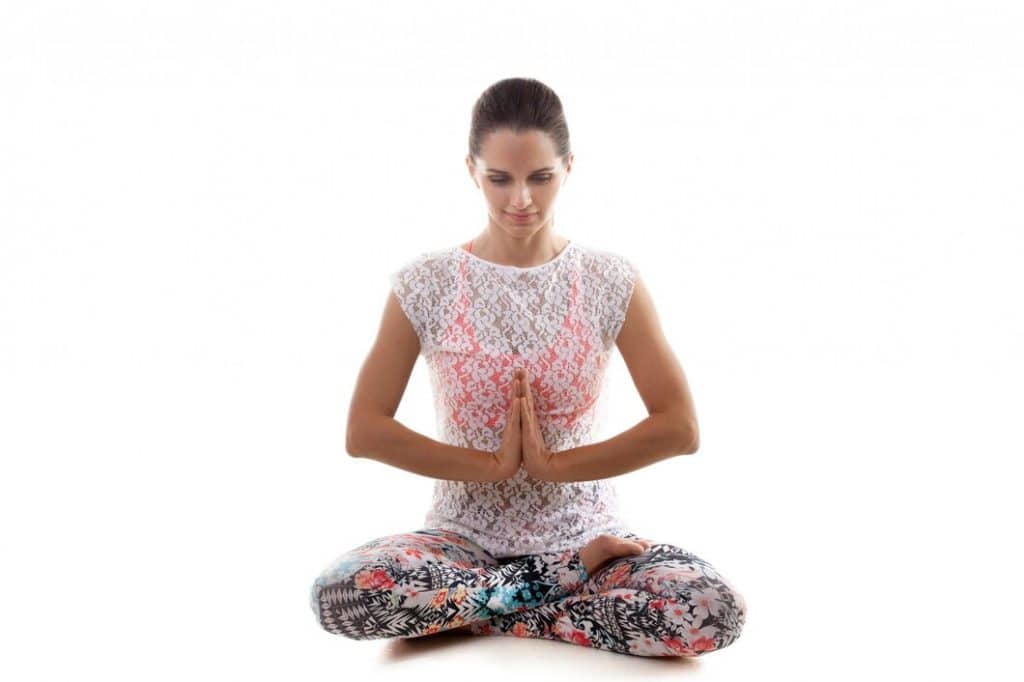
Welcome to the world of Kundalini Yoga, a transformative practice that taps into the powerful energy within and connects us to the vast cosmic energy that surrounds us. In this essay, we will delve into the essence of Kundalini Yoga, explore its unique philosophy and techniques, and discover how it can ignite the inner fire, awaken consciousness, and lead to profound spiritual growth. Get ready to embark on a journey of self-discovery, as we dive into the depths of Kundalini Yoga.
The Essence of Kundalini Yoga:
Therefore, Kundalini Yoga is a dynamic and spiritual practice that combines physical postures, breathwork, meditation, chanting, and mantra repetition. It draws its roots from ancient yogic traditions and focuses on awakening the dormant Kundalini energy, believed to reside at the base of the spine. Furthermore, through specific practices and techniques, Kundalini Yoga aims to awaken this primal energy and guide it upward, activating and purifying each energy center, or chakra, along the way.
Igniting the Inner Fire:
At the core of Kundalini Yoga lies the concept of Kundalini energy, often referred to as the “inner fire.” This potent energy is considered to be the creative life force that exists within all of us. Through Kundalini Yoga practices, such as kriyas (specific sequences of movements and exercises), pranayama (breathwork), and mantra repetition, the Kundalini energy is awakened, allowing it to rise from the base of the spine to the crown chakra. This awakening leads to heightened awareness, expanded consciousness, and a deep connection to the divine.
Embracing the Cosmic Energy:
Furthermore, kundalini Yoga recognizes that the individual is connected to the universal cosmic energy that permeates all of creation. Through the practice, practitioners aim to merge their individual consciousness with the cosmic consciousness, tapping into the infinite wisdom and love that flows through the universe. This connection with the cosmic energy leads to a profound sense of unity, expanded consciousness, and a deep understanding of one’s place in the interconnected web of life.
The Power of Mantras and Chanting:
Mantras and chanting play a significant role in Kundalini Yoga. These sacred sounds and vibrations are believed to have transformative effects on the mind, body, and spirit. Through the repetition of specific mantras. The practitioners can alter their state of consciousness, raise their vibration, and open themselves to higher realms of awareness. Chanting mantras allows the mind to become focused and still, creating a meditative state that facilitates the awakening of Kundalini energy and the expansion of consciousness.
Spiritual Growth and Self-Realization:
Kundalini Yoga offers a path of spiritual growth and self-realization. It provides tools and techniques to help individuals navigate the challenges of life, transcend limitations, and discover their true potential. Through the awakening of Kundalini energy and the integration of physical postures, breathwork, meditation, and mantra repetition, practitioners can experience profound inner transformation, expanded consciousness, and a deep sense of purpose and connection.
Furthermore, as we conclude our exploration of Kundalini Yoga, we invite you to embrace the practice of awakening the inner fire and embracing the cosmic energy. Kundalini Yoga offers a powerful pathway to self-discovery, spiritual growth, and expanded consciousness. Through the integration of physical movement, breathwork, mantra repetition, and meditation, practitioners can tap into the vast reservoir of energy within and connect with the divine cosmic energy that surrounds us. So, prepare to awaken the dormant Kundalini energy, ignite the inner fire, and embark on a journey of profound self-transformation and spiritual awakening through the practice of Kundalini Yoga. (The Power of Yoga)
Conclusion (The Power of Yoga)
In conclusion, we have thoroughly examined different varieties of yoga and their remarkable benefits for our well-being. From the gentle stretches of Hatha Yoga to the dynamic flows of Vinyasa Yoga. The intense heat of Bikram Yoga to the restful calm of Restorative Yoga. The awakening power of Kundalini Yoga, each style offers a unique path to physical health, mental clarity, and spiritual growth.
Yoga is not merely a physical exercise or discipline but a holistic approach to aligning the mind, body, and spirit. It is a personal journey of self-discovery, self-care, and self-transformation. Every pose, breath, and moment on the mat becomes an opportunity to deepen our connection with ourselves, cultivate mindfulness. And find equilibrium amidst the chaos of our daily lives.
Scientific research has validated the numerous benefits of yoga, such as increased strength, flexibility, and cardiovascular health. It improves posture, boosts immunity, and reduces stress and anxiety. However, the advantages of yoga extend beyond the physical realm. Regular practice nurtures mindfulness, allows us to embrace the present moment, and fosters a profound sense of self-acceptance and compassion.
Whether you are an experienced yogi or a curious beginner, I encourage you to explore the vast world of yoga. Furthermore, discover the style that resonates with you, ignites your passion, and nourishes your soul. Approach your mat with an open heart, a playful spirit, and a willingness to embrace the transformative power of yoga.
Furthermore, Remember, yoga is not about achieving perfection; it is about embracing the journey. Embrace the wobbles, the falls, and the moments of discomfort, for they serve as stepping stones on the path of growth. So, find humor in the process, laugh at your quirks, and celebrate every small victory along the way. (The Power of Yoga)

